Spotlight on William DeShazer
Nov 12, 2011
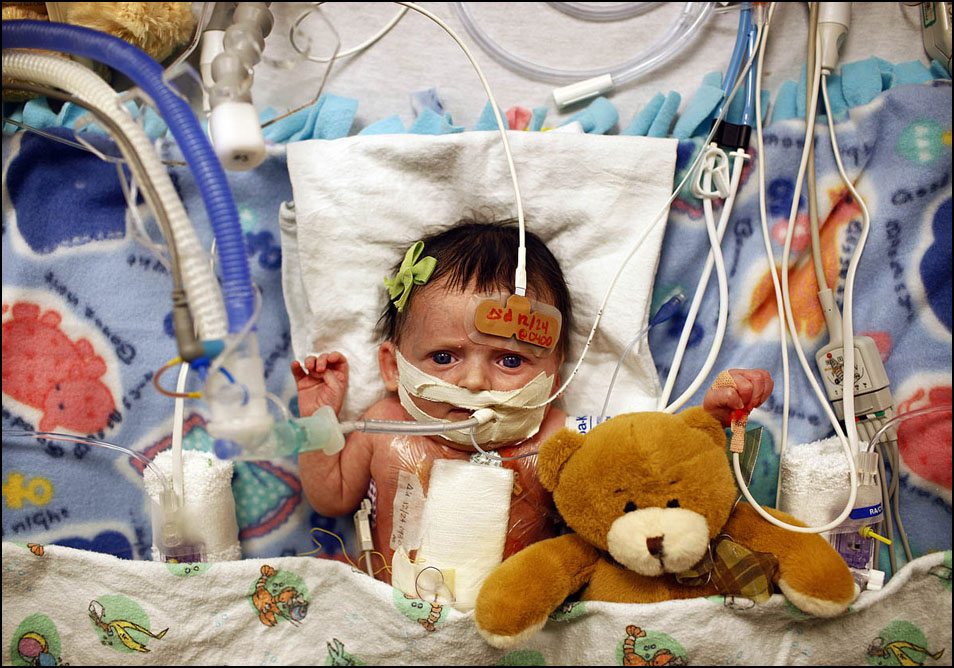
TID:
Thanks, William, for sharing this powerful image,
as well as your thoughts in the making of it.
WILLIAM:
First off, thanks for letting me be a part of the blog. This is
one month-old Loretta Brenzek. She was recovering following
heart surgery in the Pediatric Intensive Care Unit at Rush University
Medical Center in Chicago. A reporter with the Chicago Tribune and
I spent 12 hours on Christmas Eve on the unit for a story about children
having to spend the holidays in the hospital. This assignment was
given to the reporter by the hospital. Naturally, we (the photo department)
saw it as a great story and wanted to be there for the
12-hour duration.
TID:
When you arrived at the hospital, what was going on
in your mind, and how did you mentally approach the
assignment?
WILLIAM:
I must admit that I wasn't sure what to expect from this assignment. I
was concerned that the hospital's public relations department would
restrict us to the point where I wouldn't be able to show anything. That
being said, I try to avoid preconceived notions about how an assignment
will unfold. It seems that when you have spent time predicting how
things will go, you can become distracted from the situation as it actually
plays out in front of you. I mainly went in trying to be as respectful of the
situation as possible. I didn't want to make any patient or parent of a
patient feel upset by my presence. They already had enough going on,
and I didn't want to add to their stress or grief. I also made sure to pack
light and not carry a lot of big, bulky gear that would be more intrusive.
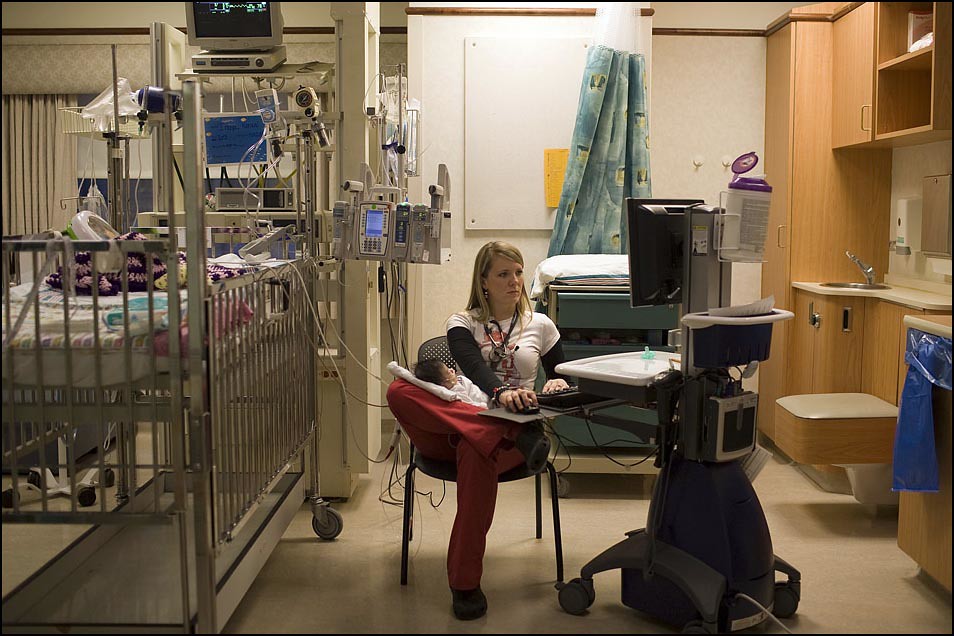
TID:
How does that differ from other assignments, and how was it similar?
WILLIAM:
I think you should always approach your subject matter with respect and care.
They are including you in an important part of their lives. Even a found feature
photo might be viewed as a significant event to a subject, and you should
genuinely care about that as well. Of course not every assignment is going to
involve a patient in a hospital experiencing a traumatic event, and the context
of the story just increases your awareness of the importance of being polite and
respectful.
TID:
How did people in the hospital react to your presence?
WILLIAM:
Almost everyone in the hospital supported us being there for a holiday
story. It did help that we worked with an amazing public relations staff
member at the hospital, who understood the story we were trying to do.
She allowed me to wander and interact freely with staff members and
patients, so I was able to introduce myself and explain why I was there.
I think that approach helped put people at ease. We weren’t just two
strangers roaming the halls.
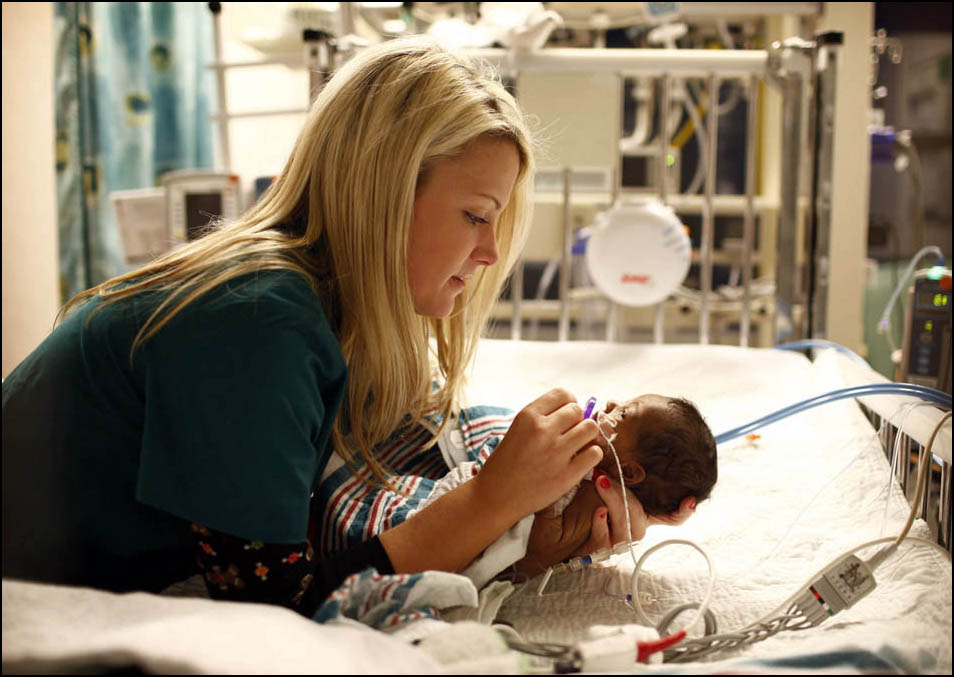
TID:
Now, onto the image. Please tell us about the moments
leading up to it, and then what is going on in the image.
WILLIAM:
I knew I needed a face to represent the children in the hospital. Something
tighter that focused on the individual, yet still conveyed what all of the children
had in common. When I saw Loretta with all of the machines and having just
gone through surgery I felt that she showed that. I took a few photos of her
from different angles. I actually left her the first time knowing that I'd come
back to check on her after a while. When I eventually ventured back to her
room, a nurse was with her, and I noticed that the nurse carefully tucked her
in and put a stuffed bear next to her. I felt that I had to go back and get a
shot that conveyed just how much time and effort the nursing staff spent on
each patient. I first asked the nurse if I could put my camera over Loretta's bed.
She said yes and I tightly wrapped the strap around my wrist. I opened up my
35mm all the way so as to draw maximum focus onto Loretta, in hopes that the
tubes and wires wouldn’t detract from her face, and I Hail Mary-ed the shot.
I fired a few frames, checked the composition and focus on the back of the
camera, and then fired another round. On the second series of shots, I felt that
I got something. Loretta’s face was changing periodically and I felt I captured
her in a way that really showed what she was enduring.
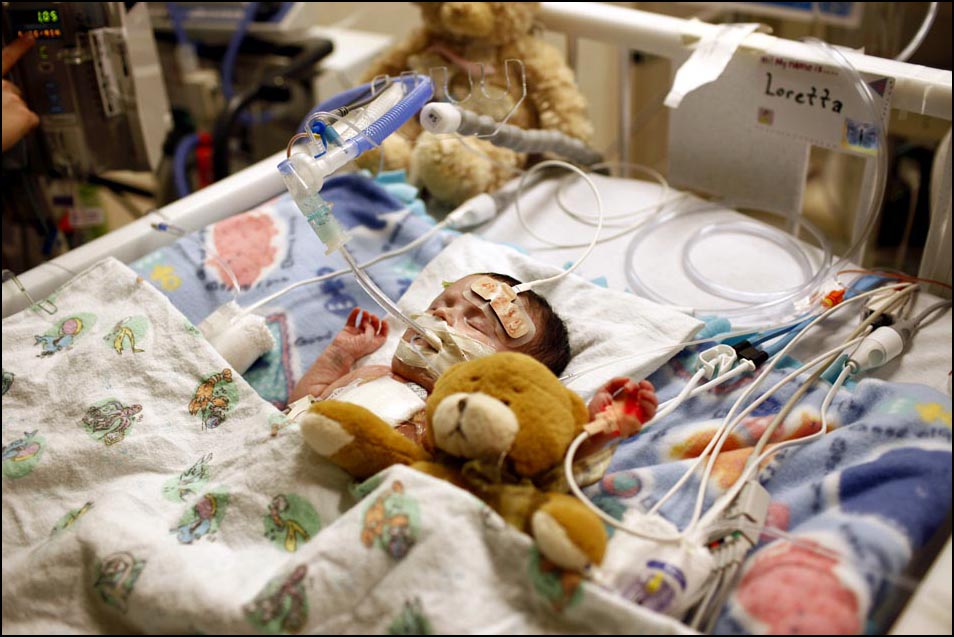
TID:
It's a very sad image, please tell us what was going through
your mind as you made it?
WILLIAM:
This might sound strange... I do think the image is sad, but I also felt a
strong sense of hope while photographing Loretta. To me the image
shows a little girl who has been through a lot, but is almost out of
the woods. I knew she was post-operation and was likely to recover
and lead an almost normal life. She would eventually have a
pacemaker put in, but, in talking with the staff, I learned that the
worst was probably over.
TID:
What problems did you encounter and how did you handle them?
WILLIAM:
I think the biggest issue that I faced was the number of potential
subjects who were there, and deciding who I should focus on. The
P.I.C.U. (Pediatric Intensive Care Unit) never seemed to slow down.
There was constant activity, with patients needing to be checked,
doctors and nurses roaming from room to room and family members
coming and going. It would have been easy to get overwhelmed by it all.
I was finally able to just take a breath and quietly observe everyone
before snapping a frame to pinpoint what stood out so that I could
capture the best images for our readers.
TID:
You're a relatively young photographer, correct? How do you
think working in situations like this has changed you since
you began working as a photojournalist?
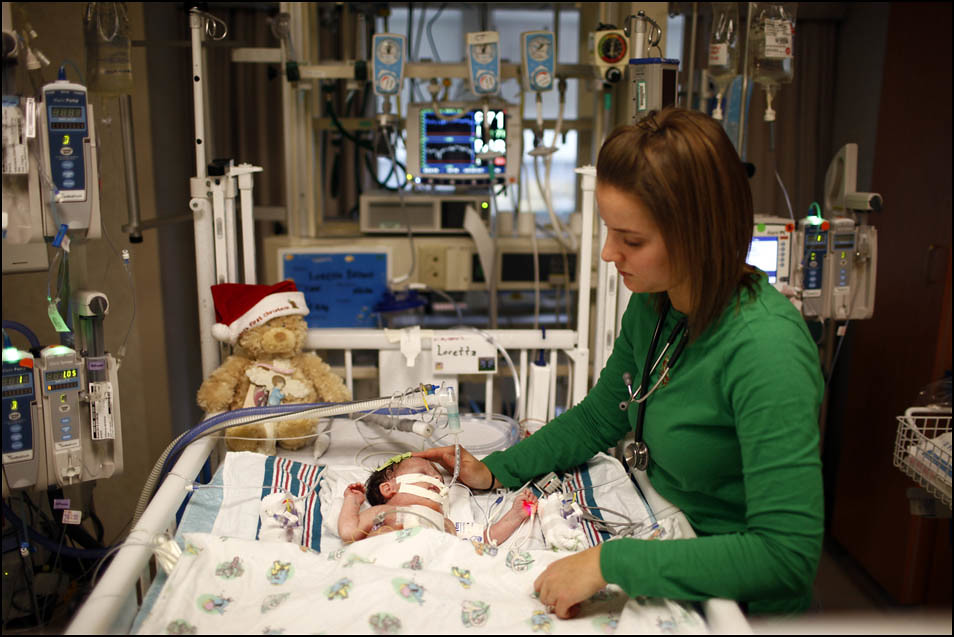
WILLIAM:
I feel that working in situations like this reinforces why I became
a photojournalist. Obviously, the more you shoot and the more
experiences you have helps shape your images for the better, but
when you also get to tell a powerful story like this it really gives you
a sense that you are helping to add to public awareness. It also helps
me realize how lucky I am and to be thankful for it.
TID:
What did you learn about other people during the making
of this picture?
WILLIAM:
I learned (again) that doctors and nurses are real heroes. They go
through so much to bring healing and preserve life. I saw nurses’
genuine love for patients and that really moved me.
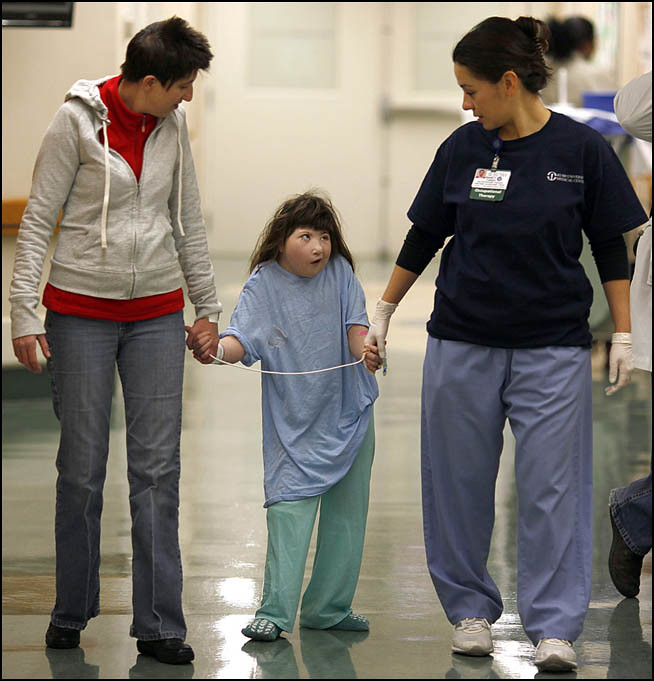
TID:
What surprised you during the making of the image?
WILLIAM:
I think that many newspaper photographers are worried. Many
worry about losing their jobs and what they will do if that happens.
I’ve always been curious about nursing, and I discovered that if I can
no longer do this as a career I may go to nursing school. I was
surprised at how clearly that came to me, but after seeing what
these nurses did for their patients, it truly inspired me to consider
nursing as a possible future career choice.

TID:
What do you now know that you wish you had known
earlier in your career?
WILLIAM:
This may sounds strange, but nothing. I’m a firm believer that
you can’t have the good without the bad, and that all of those
mistakes you make along the way help shape the person and
photographer that you are and will be.
TID:
What advice for photographers do you have?
WILLIAM:
Be true to yourself, but more important be true to your subjects.
They are the ones letting you into their lives and you should respect that.
TID:
In conclusion, do you know how the baby is doing?

WILLIAM:
I did speak with media relations and got in touch with her mother.
Loretta is almost 11 months-old, and she left the hospital back in
February. She came home with oxygen and a feeding tube, but now
her mom said she is an “eating machine." She will need surgery at 4
years-old to operate on the pacemaker, but she is hopefully through
the worst of it. I wish for her the long and happy life she deserves.
++++
William DeShazer is a photojournalist currently working for the
Chicago Tribune. He graduated from Western Kentucky University
in 2007 with a degree in photojournalism. William has held internships
with The Idaho Statesman, The Flint Journal, The Herald (Jasper, IN)
and The Dallas Morning News. He has freelanced for The Courier-
Journal, The Blood-Horse Magazine, The Star-Ledger, and Golfweek.
He has held a staff photography position with the Concord Monitor.
William has been recognized by College Photographer of the Year,
Photographer of the Year, and the National Press Photographers
Association. In 2006, he competed in the National Hearst Journalism
Awards Championship and earned First Place honors for photojournalism.
William won first place for the 2009 Illinois Photographer of the Year and
recently placed third for 2010 Illinois Photographer of the Year. The
photograph of Loretta Brenzek won Best of Show in the 2010 Illinois
Best of Photography contest.
http://williamdeshazer.com/
http://www.willdeshazer.com/blog/
+++++
Next week, we'll take a look at this surprising image by Patrick Smith:
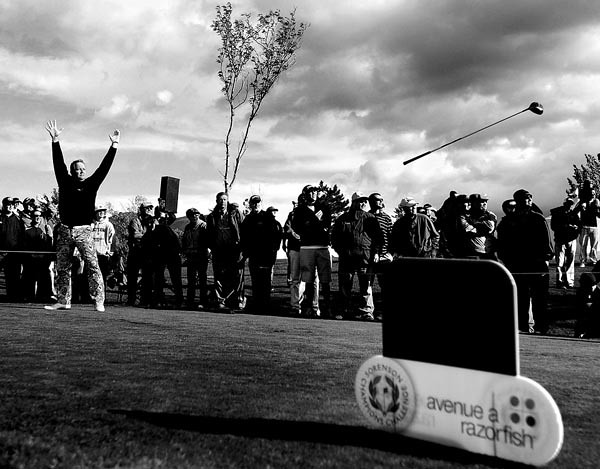
As always, if you have a suggestion of someone, or an image you
want to know more about, contact Ross Taylor or Logan Mock-Bunting:
[email protected]
[email protected]
For FAQ about the blog go to: